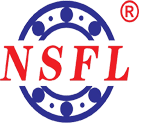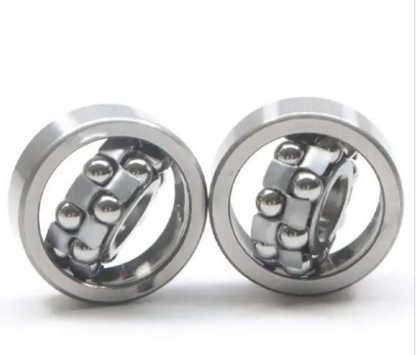21
2025
-
06
Exploring the Benefits of Linear Bearings in Industrial Applications
Exploring the Benefits of Linear Bearings in Industrial Applications Table of Contents 1. Introduction to Linear Bearings 2. What Are Linear Bearings? 3. The Benefits of Linear Bearings in Industrial Settings 3.1 Precision and Accuracy 3.2 Enhanced Efficiency 3.3 Durability and Longevity 3.4 Versatility in Applications 3.5 Cost-Effectiveness 4. A
Exploring the Benefits of Linear Bearings in Industrial Applications
Table of Contents
- 1. Introduction to Linear Bearings
- 2. What Are Linear Bearings?
- 3. The Benefits of Linear Bearings in Industrial Settings
- 3.1 Precision and Accuracy
- 3.2 Enhanced Efficiency
- 3.3 Durability and Longevity
- 3.4 Versatility in Applications
- 3.5 Cost-Effectiveness
- 4. Applications of Linear Bearings in Various Industries
- 5. How to Choose the Right Linear Bearings
- 6. Maintenance Tips for Linear Bearings
- 7. FAQs
- 8. Conclusion
1. Introduction to Linear Bearings
In the world of industrial applications, the efficiency and precision of machinery are paramount. **Linear bearings** play a crucial role in enhancing these attributes. As components that enable smooth linear motion, they are integral to various machinery, ensuring high performance and reliability. This article aims to provide an in-depth look at the benefits of linear bearings, their diverse applications, and essential tips for selecting and maintaining them.
2. What Are Linear Bearings?
Linear bearings are specially designed components that facilitate linear motion along a shaft or rail. Unlike traditional bearings, which often restrict movement to rotational axes, linear bearings allow for smooth, linear displacement. They typically consist of **ball or roller elements** that reduce friction and wear, resulting in enhanced performance and longevity.
The design of linear bearings can vary, including **guide rails**, **round shafts**, and **profile rails**, catering to different operational requirements. Industries leverage these components for their efficiency in handling loads and providing precise motion control.
3. The Benefits of Linear Bearings in Industrial Settings
3.1 Precision and Accuracy
One of the primary advantages of linear bearings is their ability to provide **high precision and accuracy**. In applications where minute measurements are critical, such as CNC machines, linear bearings ensure that components move with exactness, minimizing errors and enhancing overall product quality. This level of precision is indispensable in high-stakes industries, including aerospace and electronics.
3.2 Enhanced Efficiency
Linear bearings significantly improve the efficiency of machinery by reducing friction during operation. With lower friction, machines require less power to function, leading to energy savings and increased productivity. Enhanced efficiency not only streamlines operations but also extends the lifespan of equipment, contributing to lower maintenance costs.
3.3 Durability and Longevity
Constructed from robust materials, linear bearings are designed to endure harsh conditions. They resist wear and tear better than many traditional bearing types, which means less frequent replacements. This durability directly translates to better long-term value and reduced downtime in production environments.
3.4 Versatility in Applications
Linear bearings come in various designs and configurations, making them suitable for a wide range of applications. Whether in **3D printers**, **automated assembly lines**, or **medical devices**, their versatility allows seamless integration into different systems. This adaptability ensures that industries can benefit from linear motion technologies without compromising on performance.
3.5 Cost-Effectiveness
Although the initial investment in linear bearings may be higher than other types, the long-term savings they offer make them a cost-effective choice for many businesses. Their extended lifespan, reduced maintenance needs, and increased efficiency lead to overall lower operational costs, making them a wise financial decision for industrial applications.
4. Applications of Linear Bearings in Various Industries
Linear bearings find applications across multiple industries, showcasing their essential role in modern manufacturing and technology.
4.1 Manufacturing
In manufacturing, linear bearings are pivotal in assembly lines, CNC machines, and robotic arms. Their ability to handle heavy loads while ensuring precise movement makes them indispensable for optimal productivity and accuracy.
4.2 Automotive
The automotive industry relies heavily on linear bearings for applications such as **robotic welding**, **machine tools**, and **material handling**. Their durability and efficiency help manufacturers produce vehicles with precision and reliability.
4.3 Robotics
In robotics, linear bearings enable smooth movement for robotic arms and other automated systems. They are crucial for applications requiring meticulous positioning and reliability, such as **pick-and-place** functions and **automated assembly**.
4.4 Medical Equipment
The medical field benefits from linear bearings in devices like MRI machines, CT scanners, and surgical robots. Their precision and reliability are critical for ensuring patient safety and accurate diagnostics.
5. How to Choose the Right Linear Bearings
Selecting the right linear bearings for your application involves considering several factors:
- **Load Capacity**: Determine the maximum load the bearings will support.
- **Speed Requirements**: Assess the speed at which the system will operate.
- **Environment**: Consider whether the bearings will be exposed to dust, moisture, or chemicals.
- **Lubrication Needs**: Decide whether you need pre-lubricated bearings or if you'll require an external lubrication system.
By carefully evaluating these criteria, businesses can ensure they select the most suitable linear bearings for their needs.
6. Maintenance Tips for Linear Bearings
To maximize the lifespan and performance of linear bearings, proper maintenance is essential. Here are some maintenance tips to consider:
- **Regular Inspections**: Check for signs of wear and tear or contamination.
- **Lubrication**: Ensure bearings are adequately lubricated, using the recommended type of grease or oil.
- **Proper Alignment**: Ensure that the bearings are aligned correctly to avoid undue stress and wear.
- **Cleaning**: Keep the surrounding areas clean to prevent dirt and debris from entering the bearing.
Implementing these maintenance strategies can significantly extend the life of linear bearings and improve their performance.
7. FAQs
What are the main advantages of linear bearings?
The main advantages include precision, enhanced efficiency, durability, versatility, and cost-effectiveness in various applications.
How do I determine the right type of linear bearing for my project?
Consider factors such as load capacity, speed requirements, environmental conditions, and lubrication needs to select the right linear bearing.
Are linear bearings suitable for high-speed applications?
Yes, linear bearings are designed to operate effectively in high-speed applications without compromising precision or efficiency.
What maintenance is required for linear bearings?
Regular inspections, proper lubrication, alignment checks, and keeping the surrounding area clean are essential for maintaining linear bearings.
Can linear bearings be used in harsh environments?
Yes, many linear bearings are designed to withstand harsh conditions, but it’s important to select the right material and design for specific environmental challenges.
8. Conclusion
In conclusion, linear bearings are a vital component in modern industrial applications, offering a range of benefits that significantly enhance machinery performance. Their precision, efficiency, durability, versatility, and cost-effectiveness make them ideal for a multitude of industries, from manufacturing to healthcare. By understanding the advantages and applications of linear bearings, businesses can make informed decisions that optimize their operations and ultimately drive success. Investing in quality linear bearings not only enhances productivity but also provides long-term value, ensuring that your operations remain competitive in an ever-evolving landscape.
RELATED BLOGS
10% DISCOUNT FOR NEW CUSTOMERS

WhatsApp:+8613211157555
Tel: +8613211157555
Address:Room 1106, 11th Floor, No. 23, Fengshan West Road, Jinbang Community, Daliang Street, Shunde District, Foshan City, Guangdong Province
Copyright 2025 Schaeffler (Guangdong) Transmission Technology Co., Ltd. SEO Business license




